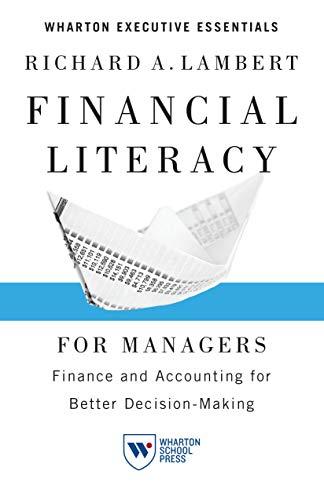Question
1a) Suppose a borrower knows at time t = 0 that it will have available at time t = 1 an opportunity to invest $340
1a) Suppose a borrower knows at time t = 0 that it will have available at time t = 1 an opportunity to invest $340 in a risky project that will pay off at time t = 2. The borrower knows that it will be able to invest in one of two mutually exclusive projects, S or R, each requiring a $340 investment. If the borrower invests in S at time t = 1, the project will yield a gross payoff of $620 with a probability of 0.8 and $180 with a probability of 0.2 at time t = 2. If the borrower invests in R at time t = 1, the project will yield a gross payoff of $675 with a probability of 0.6 and $100 with a probability of 0.4 at time t = 2. The borrowers project choice is not observable to the bank.
The riskless, single-period interest rate at time t = 0 is 10%. It is not known at time t = 0 what the riskless, single period interest rate at time t = 1 will be, but it is common knowledge that this rate will be 8% (with probability 0.65) or 15% (with probability 0.35). Assume universal risk neutrality and that the borrower has no assets than the project on which you (as the lender) can have a claim.
Suppose you are this borrowers bank and both you and the borrower recognize that this borrower has two choices: (1) it can do nothing at time t = 0 and simply borrow at the spot market at interest rate prevailing for it at time t = 1, or (2) it can negotiate at time t = 0 with you (or some other bank) for a loan commitment that will permit it to borrow at predetermined terms at time t = 1.
What advice should you give this borrower? Assume a competitive loan market in which each bank is constrained to earn zero expected profit. Determine the NPV of the alternative(s) that you recommend.
1b) Suppose bank A has two loans, each of which is due to be repaid one period hence and whose cash flows are perfectly positively correlated and identically distributed random variables. Each loan will repay $365 to the bank with probability 0.7 and $180 with probability 0.3. However, while bank A knows this, prospective investors cannot distinguish the banks portfolio from that of bank B that the same number of loans, but each of its loans will repay $365 with probability 0.45 and $180 with probability 0.55. The prior belief of investors is that there is 0.70 probability that bank A has the higher-valued portfolio and 0.3 probability that bank B has the lower-valued portfolio. Suppose that bank A wishes to securitise these loans, and it knows that if it does so without credit enhancement, the cost of communicating the true value of loans to investors is 5.0 percent of its true value. Explore bank As securitisation alternatives. Assuming that a credit enhancer is available and that the credit enhancer could (at negligible cost) determine the true value of the loan portfolio, what sort of credit enhancement should bank A purchase? Assume that everybody is risk neutral and that the discount rate is zero.
Step by Step Solution
There are 3 Steps involved in it
Step: 1

Get Instant Access to Expert-Tailored Solutions
See step-by-step solutions with expert insights and AI powered tools for academic success
Step: 2

Step: 3

Ace Your Homework with AI
Get the answers you need in no time with our AI-driven, step-by-step assistance
Get Started


